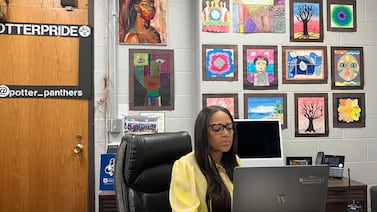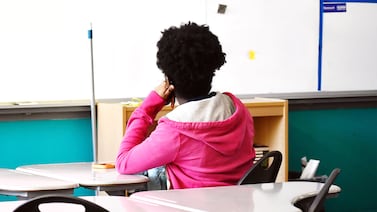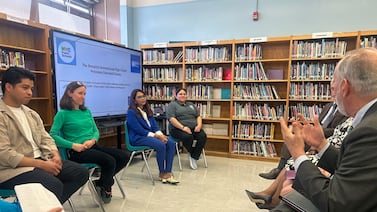Sign up for Chalkbeat Indiana’s free daily newsletter to keep up with Indianapolis Public Schools, Marion County’s township districts, and statewide education news.
This election, there are more open seats than candidates for Perry Township school board.
The only two people running are incumbents Emily Hartman and Jim Hernandez. Indiana law says the other two incumbents — Steve Johnson and Ken Mertz — could choose to hold onto their seats, even if they aren’t officially running for reelection.
But if Johnson and Mertz leave, then it’s up to board members to appoint two new members of the seven-member body by a majority vote.
Johnson said in an email to Chalkbeat that he would make a decision next week on whether he intends to stay in his seat. Mertz did not reply to a request for comment. Both of their terms expire in December 2024. Johnson has been on the board since 2017, while Mertz has served on it since 2008.
With at-large seats, as is the case in Perry Township, it’s up to the board to determine which members were eligible for the hold-over provision, according to the Indiana School Boards Association. If the incumbent members choose to leave, the board may appoint a replacement by a majority vote.
It’s not the first time the Perry board has faced a dearth of interested candidates. In 2020, for example, there were just three incumbents running for three seats. Things got more competitive in the next cycle in 2022, when seven candidates sought out four seats.
Observers attribute tepid interest to a lack of awareness about school boards, and to the socioeconomic barriers to serving in a seat.
The absence of contested elections is one reason Indiana may have low voter participation overall, according to one report.
In turn, that makes it easier for outside groups to sway election results, said David Roof, director of the Center for Economic and Civic Learning at Ball State University.
“People pay more attention to national politics today than local politics,” Roof said. “Potentially people are uninformed about the impact a school board could have.”
Barriers to running for school board include awareness
Often, people begin paying attention to the school board when there’s a problem, said Leslie Wells, a Perry parent, via email. In her case, she said she got involved after the district’s 2022 redistricting plan significantly affected her family.
“That experience drove home to me just how impactful school boards are to the futures of our kids, families, and communities,” Wells said. “Now, I pay closer attention to what’s going on.”
Still, the time commitment required to serve on the board may not be feasible for many working families in Perry schools, Wells said. The lengthy terms of many school board members also contribute to apathy, she said, as people become used to seeing the same faces in the boardroom.
Perry schools is also home to a large number of immigrant families who may face a language barrier to civic engagement.
Even those who communicate fluently in English may not feel comfortable doing so as public representatives, said Julie Zing, executive director of the Chin Community of Indiana, a nonprofit.
Still, Chin Community undertakes voter registration efforts ahead of every election, and sends people reminders about deadlines for registering and voting. Ahead of this year’s primary, the group registered around 30 people to vote within two months, Zing said.
In 2022, one of its leaders, Hre Mang, was elected to the Perry school board.
Zing said she would like to see more representatives from the community — particularly young people — serve in offices and as liaisons across the city.
“He’ll be our first,” Zing said, referring to Mang, “but we want more people to get involved in community engagement, not just in the Chin community, but in the whole Indianapolis community.”
Wells said one solution could be a public awareness campaign about the election process, filing deadlines, and the role of a school board.
“Whether the barriers are real or perceived, commitments like this often cause people to think they aren’t able, aren’t needed, or aren’t qualified to serve,” Wells said. “Addressing those perceptions and barriers could help spur new interest in our school board.”
How to get involved with school boards
For those who are interested in running for school board, the Indiana School Boards Association hosts a series of School Board Candidate 101 webinars, which are also recorded.
The organization offers nonpartisan resources including a candidate guide, FAQ, and an overview of the responsibilities of school boards and superintendents.
Around 200 people registered for the 2024 webinars, according to Executive Director Terry Spradlin.
Perry schools also runs a Leadership Academy, a seven-month program for parents and community members to learn about how the district functions. It features officials from different departments.
Applications for the Leadership Academy’s 2024-25 cohort open in August.
The next meeting of the Perry school board is Monday, July 8.
Aleksandra Appleton covers Indiana education policy and writes about K-12 schools across the state. Contact her at aappleton@chalkbeat.org.







